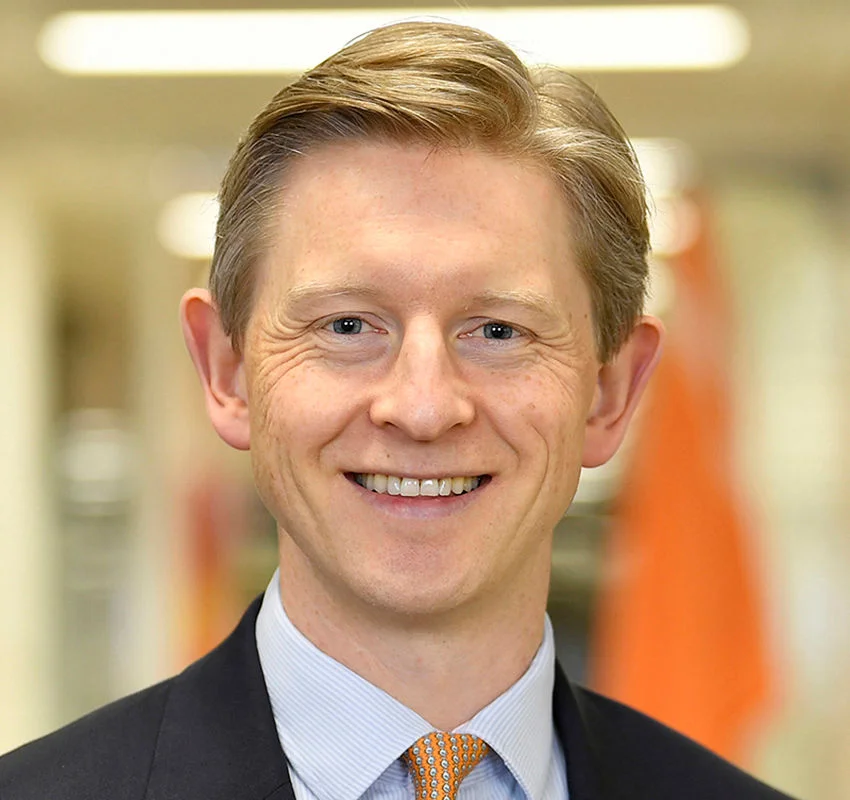The Donald goes to War
Russia; China; India; the EU; Mexico; Fed Chairman Jerome Powell: all are in Donald Trump’s crosshairs for targeted retribution. Given the nature of the beast, it would be unlikely if this were the complete list.
After the frenetic activity of his first days in office and the phoney war interregnum of the 90-day cooling-off period following his April 2nd Liberation Day, he’s winding up the tariff tension again ahead of an amended final deadline of 1st August.
In a case of ‘who will rid me of this turbulent central banker (and how do I get him out)’, one way or another Trump would love to get rid of Jay Powell; if he can’t get rid of Powell, he will do anything to undermine his authority. Trump wants interest rates to fall faster than the Fed Open Markets Committee has so far been prepared to make happen and he believes that rates should be three points lower than the current 4.5%. The Fed is independent.
There is little that is new in either story: both are merely a continuation of hostilities with the Fed, and the war of economic attrition with US trade counterparties as he browbeats them into submission.
The penny drops: Putin is a wrong’un
What is very new is the volte face with regards the war between Russia and Ukraine. At long last, the scales have finally fallen from President Trump’s eyes: Vladimir Putin is not to be trusted. Who knew! As Trump admitted to the BBC’s America correspondent Gary O’Donoghue in an extraordinarily candid and seemingly cathartic brain dump, the fact that he trusts “almost nobody” is beside the point. If Trump had watched the excellent BBC2 ‘Putin versus the West’ series screened in February 2023 in which the common admission from figures including David Cameron, Teresa May, Boris Johnson, Francois Hollande, Mark Rutte, Jean-Claude Juncker and others in each case was “Putin lied to me!”, Trump could have saved himself and President Zelensky a lot of time. Brought forward from his first term, Trump’s irrepressible self-belief allowed him to convince himself that he had a very different relationship with Putin than did other leaders: the Russian autocrat respected the straight-talking American President with whom he could do deals. The reality was different: the KGB officer (“there is no such thing as an ex-KGB officer”; Vladimir Putin) was stringing the New York property tycoon along all the time, playing him like a fish. Lying to him, in fact.
Though he will never admit it (“I don't want to call him an assassin but he's a tough guy. It's been proven over the years, he fooled a lot of people – Clinton, Bush, Obama, Biden. He didn't fool me. At a certain point talk doesn't talk, it's got to be action.”) whether he likes it or not, Trump is merely the latest member of the Putin International Dupes Club.
Biden’s old strategy with a new Trump twist
All of which suddenly makes the situation much simpler: Donald Trump is going to take sides. Perhaps it is more accurate to say he is switching sides: even if not having explicitly supported Russia, his former stance of withdrawing all military aid to Ukraine was tantamount to the same thing. Although he has not specified the full breadth of weapons and ordnance to be supplied to Ukraine (essentially, the distinction is between offensive systems with which to attack the Russians or defensive ones with which to withstand the missile onslaught on urban areas, notably Kyiv and Lviv; there will almost certainly be restrictions placed on the use of offensive weapons e.g. not being used to attack Moscow etc), the Patriot anti-missile missile systems will certainly be boosted.
We have discussed previously that on the stump, Trump was emphatic that the US taxpayer would cease to foot the bill for Ukraine’s war effort; in conjunction with NATO Secretary General Mark Rutte, a tentative agreement has been reached by which Trump can satisfy that pledge: arms and munitions will be paid for by European NATO members who will act effectively as non-remunerated wholesalers delivering the goods to Ukraine by way of grant. Stocks of existing US munitions already in Poland and Rumania will be delivered to Zelensky and then backfilled with replacements from America. At home it allows Trump to face down his vociferous neo-con, isolationist critics who accuse him of recanting on not getting involved in other people’s wars: a) he will be able to make the case that while Putin refuses to parley, it is still necessary to try and bring the conflict to an end and this is realistically the only way of doing it; b) US defence contractors are benefiting from what are essentially third party commercial sales with the US taxpayer bearing no financial liability; finally, c) it is a European war and this latest initiative ensures Europe takes direct responsibility, precisely what US foreign policy hawks want. Problem solved. It is a very long way from February and the notorious ambush of President Zelensky in the White House when loudly and intemperately Trump accused him of instigating the conflict and ‘playing with starting World War Three!’, as if Ukraine was the aggressor.
The flaw in the plan is that in allowing the costs to be included in their new 3.5% of GDP defence commitment, participating NATO members will be leeching funds to Ukraine instead of restoring or bolstering their own national military capabilities.
For Ukraine, assuming Trump’s initiative is successful, the status quo ante is restored but no more than that: Zelensky’s access to US weapons is resumed but as was the case under Joe Biden, really only to the extent of keeping him in the game but not allowing him to win. In his situation of a military Oliver Twist, living by his wits and waging war by way of benefits and charitable donations, he must be grateful for whatever benevolence he receives; without Trump changing his mind, it would have been much worse.
And then there’s Macron
But as ever with NATO, nothing is straight forward. Never forget that while it is a military alliance, it is and always will be a political construct first and foremost. Politics and national interests pervade, even in times of threat. At the time of writing, Germany, Finland, Denmark, Sweden, Norway, Holland and Canada are interested but not confirmed parties in Trump’s initiative. Silent so far is the UK (the UK is already heavily invested in the military fortunes of Ukraine, in effectiveness second only to the United States even if surpassed financially by Germany). Missing in action are the usual suspects: France, Italy and Spain of the trillionaire EU economies.
The French position is one of President Macron increasingly tying himself in knots in contradictory and duplicitous policy stances: an appeaser-turned-Ukraine-advocate, Macron talks a good game but fails to back his words with commitment (e.g. France’s military aid is only 40% of the level of the UK since hostilities began despite being a similar-sized economy and it resolutely refuses to donate Leclerc main battle tanks or infantry fighting vehicles); while urging solidarity of the cause, Macron is determined that EU (i.e. French) defence contractors should actively be favoured over those of non-EU NATO partners including the UK and specifically the US; similarly, explicit in his recent Guildhall and Parliament speeches during his State Visit to the UK, he preaches active non-alignment with the United States; not alone in the EU, but France continues to buy embargoed liquid natural gas (LNG) from Russia.
Any such alliance is only as strong as its weakest link: the US is portrayed popularly as the ‘unreliable ally’; nuclear-armed France has the strongest military in Europe but politically it can accurately be described as ‘flaky’ and ‘unhelpful’ when it comes to its position in NATO. In contrast, new German Chancellor Friedrich Merz ‘gets it’: in this transatlantic rebalancing of the shared burden within NATO, Merz is working closely, constructively and responsibly with Trump; if Macron seems determined to push Trump out of the tent, Merz is equally determined to keep him in. Macron is fixated with the EU being a global superpower to rival America and China; Merz is preoccupied with keeping Putin’s tanks inside Russia where they belong.
Expending and tightening the sanctions net
The second part of Trump’s Ukraine initiative is the imposition of secondary tariffs against any country willingly funding Russia’s ability to wage war and which also exports goods to the US. Failure of those countries to cease such activities within 50 days (i.e. by 1st September) will incur 100% tariffs on sales to the US. Back in 2022, Joe Biden and Boris said that the world’s strongest sanctions regime ever imposed would bring Russia ‘to its knees economically’. It did not. Far from a sealed and solid economic barrier cutting Russia off from foreign trade, the construct proved to be more akin to a colander.
Consider the facts quoted here from the Center for Research on Energy and Clean Air website, since the EU embargoed the transport of Russian oil products to the EU and other G7 countries in December 2022 (data as at 30 April 2025):
Coal: From 5 December 2022 until the end of April 2025, China purchased 44% of all of Russia’s coal exports. India (19%), Turkey (11%), South Korea (10%), and Taiwan (5%) round off the top five buyers list.
Crude oil: China has bought 47% of Russia’s crude exports, followed by India (38%), the EU (6%), and Turkey (6%).
Oil products: Turkey, the largest buyer, has purchased 26% of Russia’s oil product exports, followed by China (13%), and Brazil (12%).
LNG: The EU was the largest buyer, purchasing 50% of Russia’s LNG exports, followed by China (21%), and Japan (19%).
Pipeline gas: The EU was the largest buyer, purchasing 37% of Russia’s pipeline gas, followed by China (29%), and Turkey (27%).
In the month of April alone, China bought €5.9bn worth of Russian hydrocarbon products, followed by India (€4.2bn), Turkey (€2.1bn), the EU (€1.5bn) and Brazil (€0.8bn). Of the EU member states the top 5 Russian counterparties were Hungary (crude/pipeline gas), France (LNG), Slovakia (crude/pipeline gas), Belgium (LNG) and Spain (LNG); all are NATO members, as is Turkey. It is estimated that currently around 65% of Russia’s crude is shipped aboard ‘shadow’ tankers whose ownership, registration and electronic signal prints are deliberately obscured to avoid detection when sanction-busting; it still means that 35% is transported aboard ‘legitimate’ G7+ tankers.
Hawks have asked, why the 50 days? If Trump is serious why not impose the sanction immediately? The answer is easy: to maintain orderliness. 50 days gives global oil and gas producers time to ramp up production to replace the embargoed supply thus minimising the risk of a big spike in commodity prices. If Trump wants the US taxpayer off the hook for the cost of military hardware, he does not want the US consumer bearing the brunt of economic sanctions through increased gasoline prices.
What of the potential trade risk should these countries or the EU fail to meet Trump’s demand. In 2024, China’s exports to the US amounted to $438.9bn, 12% of its total export value; the comparable figures for others are: India, $87.4bn (10.6%); Turkey $16.7bn (6.4%) and the EU $605.8bn (23.4%). With two sequential deadlines looming, August 1st for outstanding ‘Liberation Day’ trade negotiations, followed by 1st September for the 100% penalty for sanction-busting, the next month-and-a-half poses a range of possible outcomes. At the extremes are 1) an all-out global trade war combined with major geopolitical security risks, explicitly casting China and India as having interests inimical to the US while simultaneously driving a new wedge between the US and its EU NATO allies including Turkey; and 2) all Trump’s aims are achieved, a global trade war is averted and a realistic means of ending the war with Ukraine is within sight. And anything in between.
The investment perspective
Equities remain not just sanguine but positive: US, UK, German and Japanese indices are daily testing new all-time highs. Investors today are more relaxed about tariffs, having had several months to digest the ramifications and the extent to which Trump’s new initiatives are simply variations on a theme. They remain optimistic that the general trend for interest rates is downwards. Clearly there must be a downside risk if scenario 1) above were to be the outcome and to use a popular phrase, ‘the wheels drop off’.
Fixed income investors on the other hand remain cautious: as reflected in a steepening yield curve (it is rational behaviour for bond yields to be higher for longer-dated bonds as uncertainty increases as visibility decreases the further into the future you go) they worry about deficits, debt, geopolitical risks and the possibility of being tripped up.
As a final observation, being peak season when most investors are away on a beach and market liquidity is seasonally tighter than normal, August has a habit of producing volatility if any surprises do emerge. On which happy note, don’t let that spoil your holidays!
The Jupiter Merlin Portfolios are long-term investments; they are certainly not immune from market volatility, but they are expected to be less volatile over time, commensurate with the risk tolerance of each. With liquidity uppermost in our mind, we seek to invest in funds run by experienced managers with a blend of styles but who share our core philosophy of trying to capture good performance in buoyant markets while minimising as far as possible the risk of losses in more challenging conditions.
The value of active minds: independent thinking
A key feature of Jupiter’s investment approach is that we eschew the adoption of a house view, instead preferring to allow our specialist fund managers to formulate their own opinions on their asset class. As a result, it should be noted that any views expressed – including on matters relating to environmental, social and governance considerations – are those of the author(s), and may differ from views held by other Jupiter investment professionals.
Fund specific risks
The NURS Key Investor Information Document, Supplementary Information Document and Scheme Particulars are available from Jupiter on request. The Jupiter Merlin Conservative Portfolio can invest more than 35% of its value in securities issued or guaranteed by an EEA state. The Jupiter Merlin Income, Jupiter Merlin Balanced and Jupiter Merlin Conservative Portfolios’ expenses are charged to capital, which can reduce the potential for capital growth.
Important information
This document is for informational purposes only and is not investment advice. We recommend you discuss any investment decisions with a financial adviser, particularly if you are unsure whether an investment is suitable. Jupiter is unable to provide investment advice. Past performance is no guide to the future. Market and exchange rate movements can cause the value of an investment to fall as well as rise, and you may get back less than originally invested. The views expressed are those of the authors at the time of writing are not necessarily those of Jupiter as a whole and may be subject to change. This is particularly true during periods of rapidly changing market circumstances. For definitions please see the glossary at jupiteram.com. Every effort is made to ensure the accuracy of any information provided but no assurances or warranties are given. Company examples are for illustrative purposes only and not a recommendation to buy or sell. Jupiter Unit Trust Managers Limited (JUTM) and Jupiter Asset Management Limited (JAM), registered address: The Zig Zag Building, 70 Victoria Street, London, SW1E 6SQ are authorised and regulated by the Financial Conduct Authority. No part of this document may be reproduced in any manner without the prior permission of JUTM or JAM.









